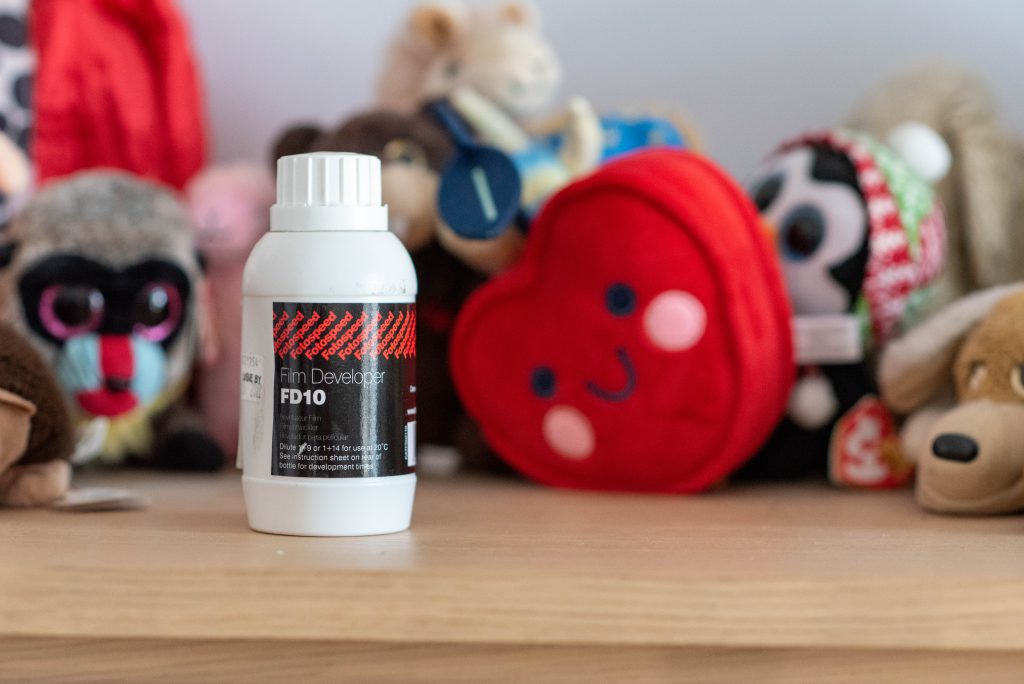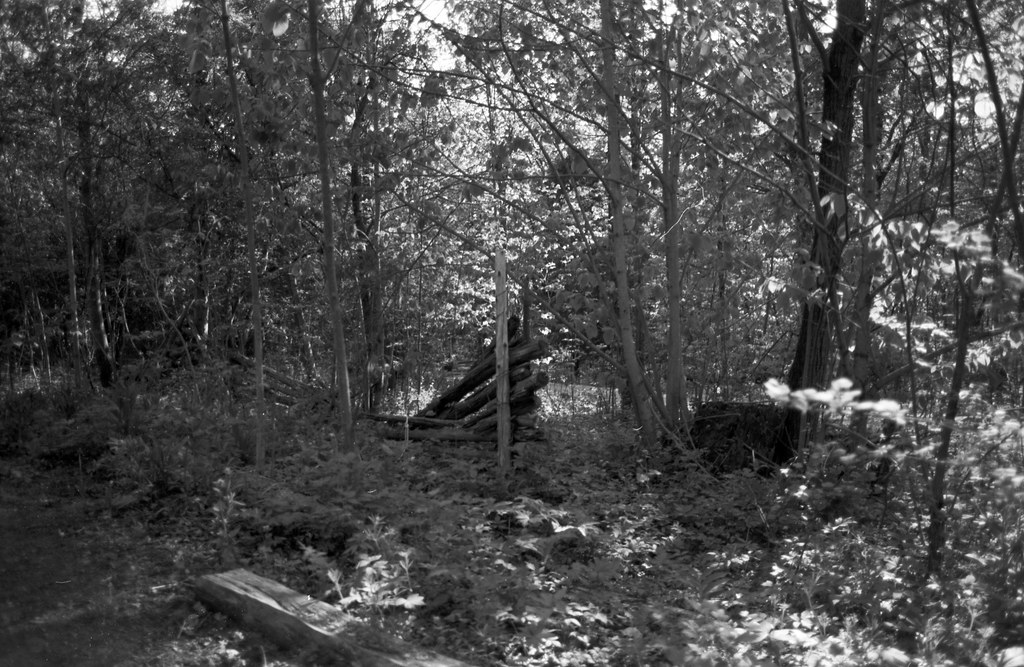There’s always another developer out there to try out, and every time I start to wonder when I’ll need to wind down these reviews, another one pops up. In the case of Fotospeed FD10, I saw it on an Instagram story from a fellow film photographer and started to hunt it down. There are two versions of FD10 out there, Fotospeed and Berspeed; I’m not sure which company made the developer originally or what the developer was made for. But from what I’ve seen online, this is an excellent general-purpose developer for small-scale to large-volume processing.

Technical Details
Manufacturer: Fotospeed
Name: Film Developer FD10
Primary Developer: Hydroquinone & Phenidone
Type: One-Shot
Mix From: Liquid




Handling
If there is something familiar about FD10, it is how it mixes and the two dilutions recommended. The developer is a thin liquid with a slight yellow tint to the concentrate. It pours and mixes easily. You can mix it either at a 1+9 or 1+14 dilution, and there isn’t any difference in quality between the two. As in some developers, you can control the contrast by diluting the developer. But in the case of FD10, this is achieved by changing the times. The datasheet for the film comes with two sets of times for each dilution, medium contrast and high contrast times, which is unique and oddly pleasing that the folks behind FD10 took the time to include. I also prefer to see shorter times for lower contrast. Another excellent part about FD10 is that it comes in three different volumes, with a 250mL, 1L and 5L container, making it ideal for small-scale to lab-scale use for a developer. The one thing you do need to watch out for is shelf life; the concentrate in a sealed bottle has an ideal life of one year (I’m sure in practice this is longer), but once it’s opened, you have four months by the book, but probably closer to six. So you can scale your purchase by dilution and the number of films you’ll be processing. For this review, I went with the small bottle and ran it at a 1+9 dilution giving me five rolls of film, more had I doubled up some of my 35mm rolls.




Applications
It is hard to put the finger on what is the best application for FD10; it is almost a jack of all trades, putting it firmly in the general purpose category. But the ability to knock back grain has an excellent long tonal range and maintains a good level of sharpness. FD10 is more of an elevated general-purpose developer. And while this is a perfect home development choice, it will also work well in medium to small commercial lab settings. It works well with almost all films, from slow to fast, along with cubic, t-grain, and motion picture films. It also does a good job in handling expired film and pull processes. I did not get a chance to try FD10 with push processing, but I have a feeling that it will handle that application well. Plus, being available in volumes from 250mL to 5L and having a 1+9 and 1+14 dilution, you can adjust your volumes by numbers and timeline. Plus, I found this developer works well in a regular tank, motorised system, and dip-and-dunk processors. What makes FD10 excellent is that it isn’t meant for only one film, or process. It can handle anything you throw its way.




Qualities
The documentation for FD10 mentions that it will deliver similar results to ID11, which is both right and wrong. Right in the sense that it will provide good results and let the film’s qualities speak for themselves. Bad in that it does an excellent job of taming grain while maintaining some edge sharpness. And that is one of the best parts about FD10; now, not everyone will like this; in some cases, you get a bit of softness in more grainy films. But don’t let that stop you; it does an excellent job with motion picture films like Eastman Double-X and Foma. But you can count on no real diminishment in edge-sharpness in already fine-grain films. But it can, at least with the roll of Delta 100, make the edge’s razor sharp. You can always lean on the wide tonal range and medium-to-high contrast. But if you need that extra kick, you can always use the high-contrast times.




Lowdown
I did not know what to expect from FD10. But I was pleasantly surprised with the results across the board. It is almost as if ID-11, Rodinal, and Microphen had a baby. It has the best qualities of each into a single easy-to-use developer that will handle 90% of your development. It also reminds me a lot of Adox FX-39 II in its usefulness and qualities. There are also many developing times and combinations available for FD10. While more readily available in Europe, you can pick it up through Freestyle Photographic in North America in all the main sizes, so you can easily adjust this to how much you need. The downside is the short shelf life, only four months after you’ve cracked the bottle. But if you are looking for something that can handle most of your developing work and don’t want too many developers hanging around, give FD10 a try; it may surprise you!




Recommended Reading
Don’t just take my word on FD10; check out these other blogs on the subject!
No other reviews found.